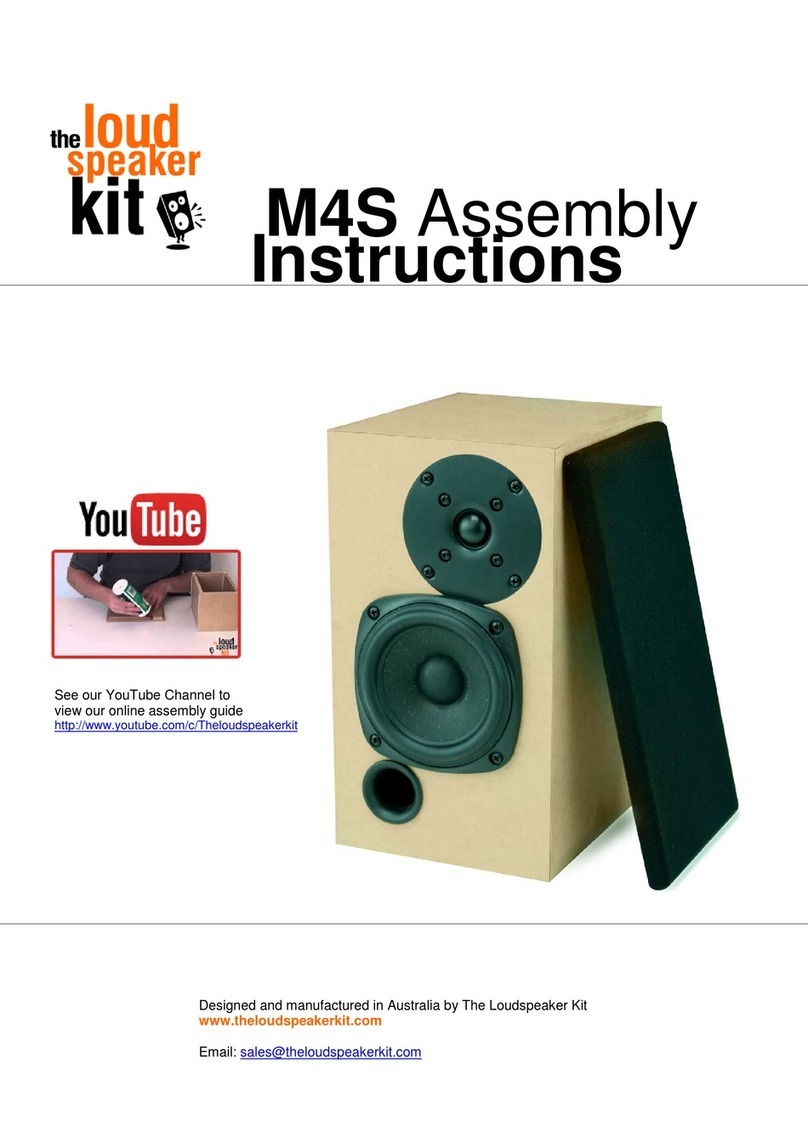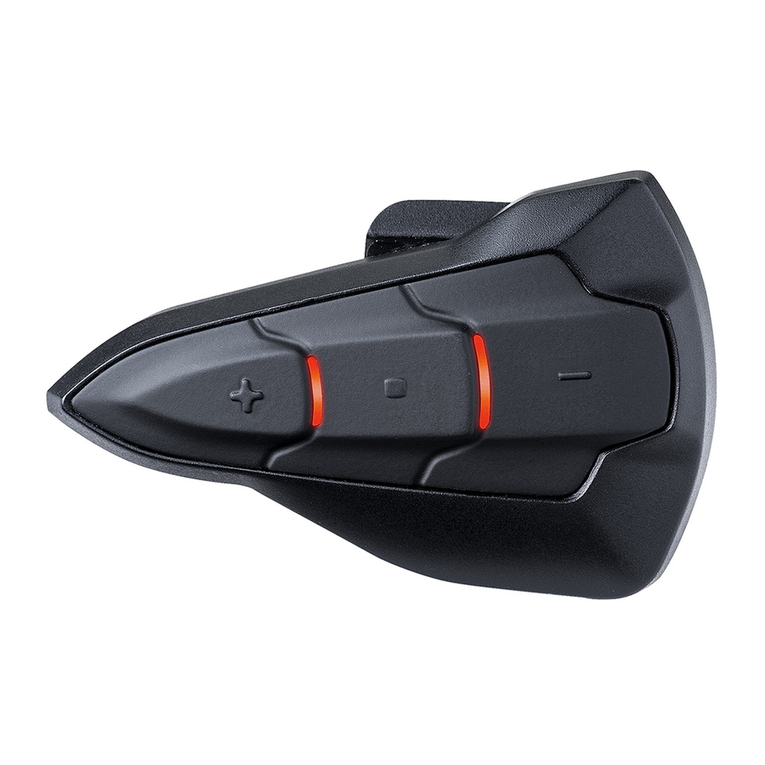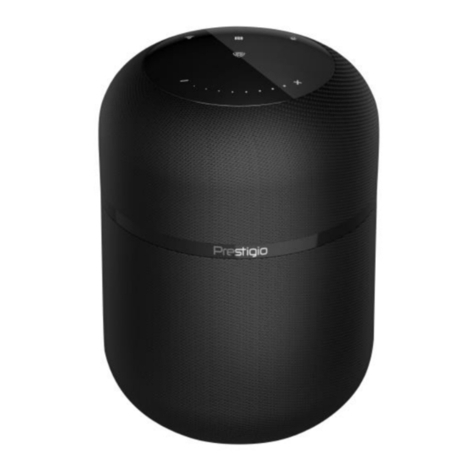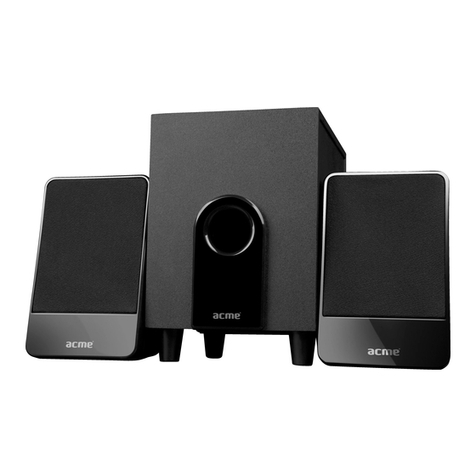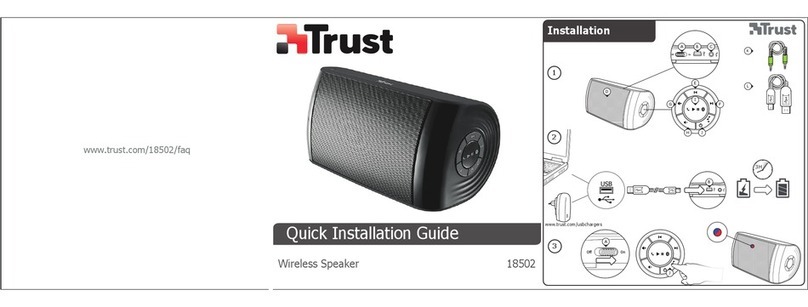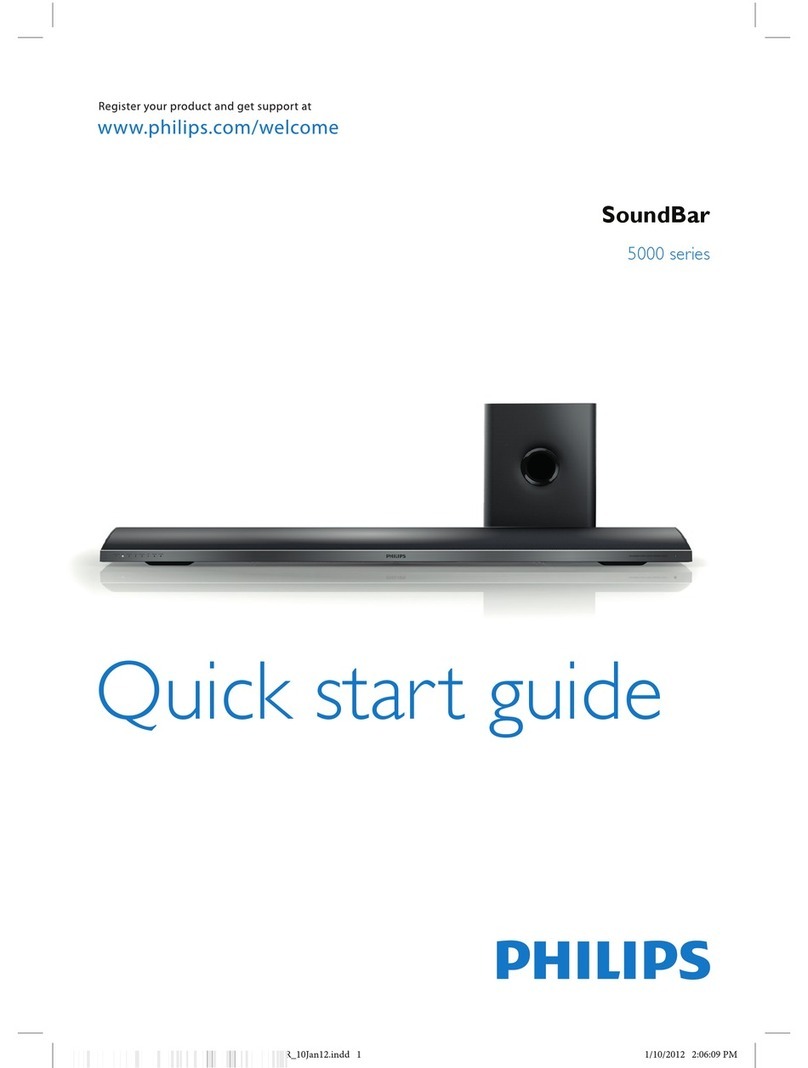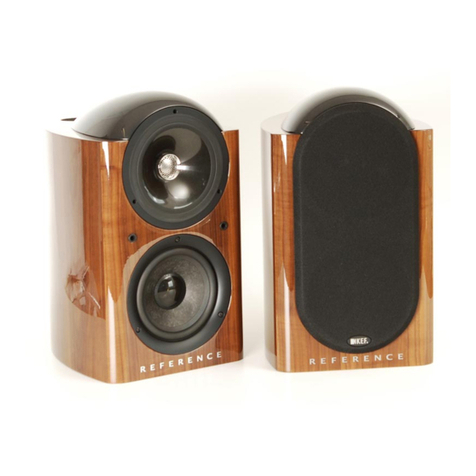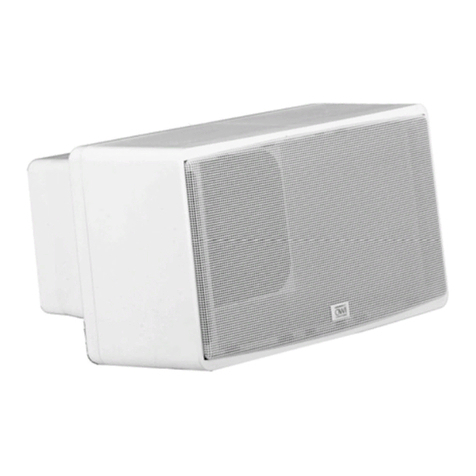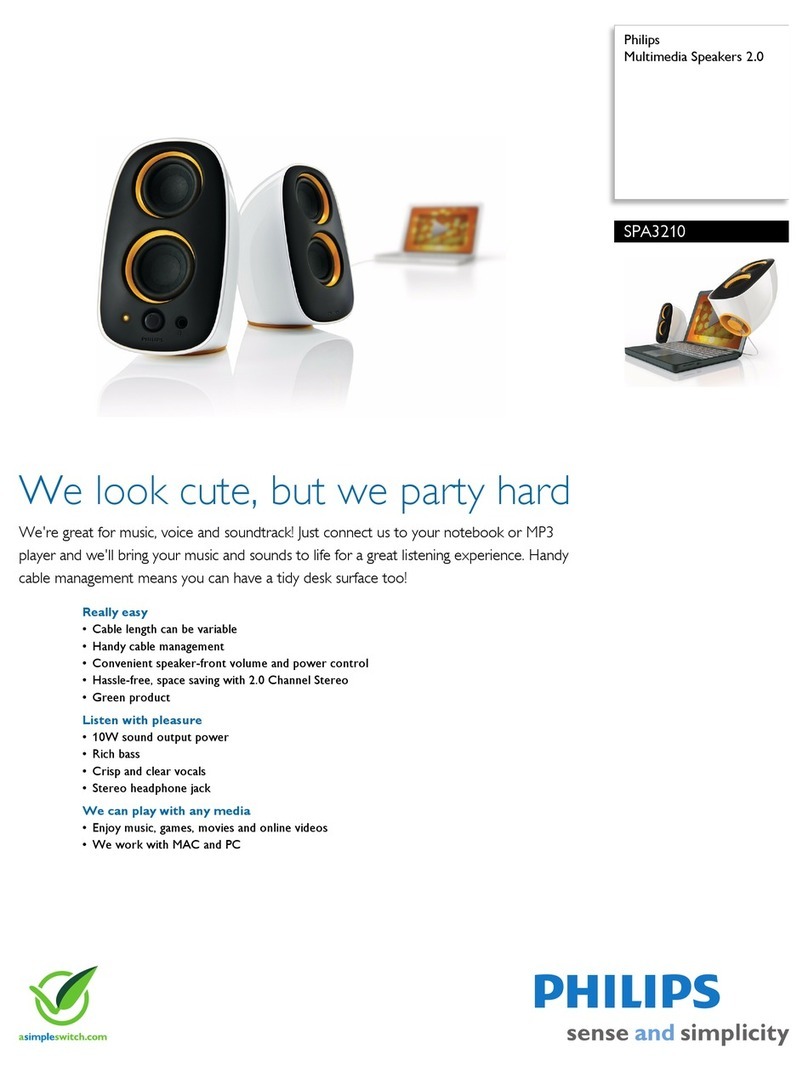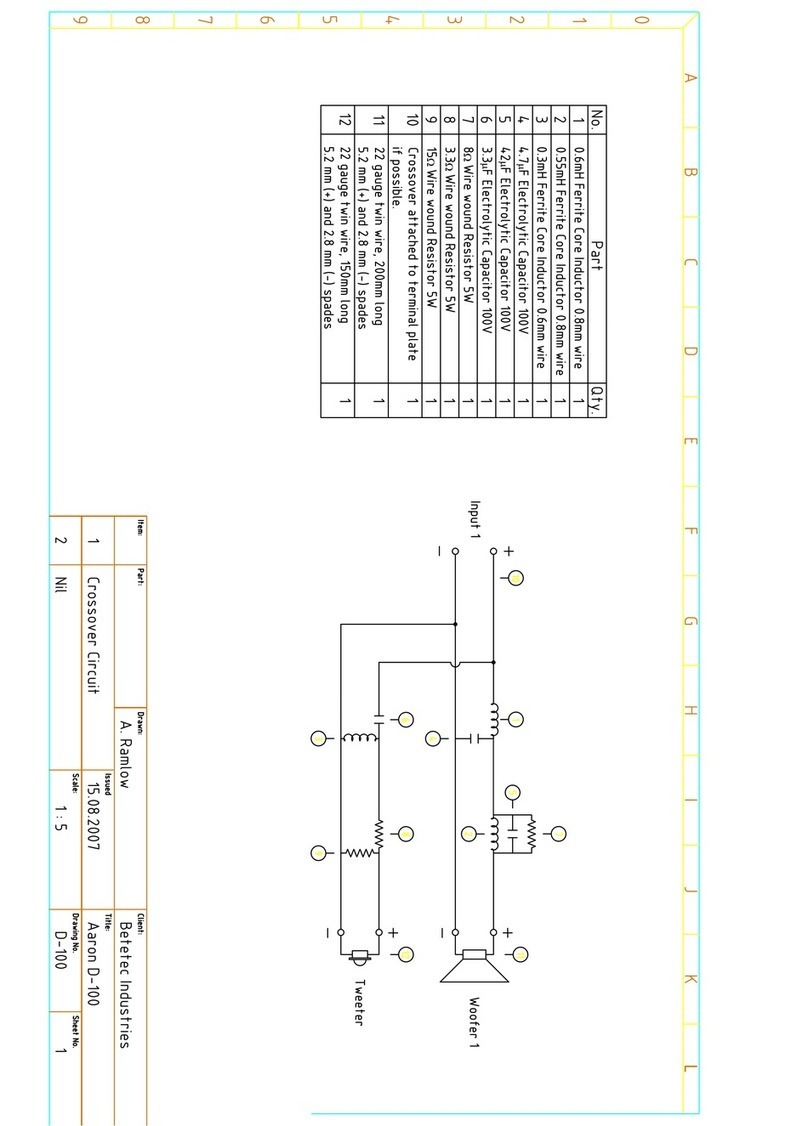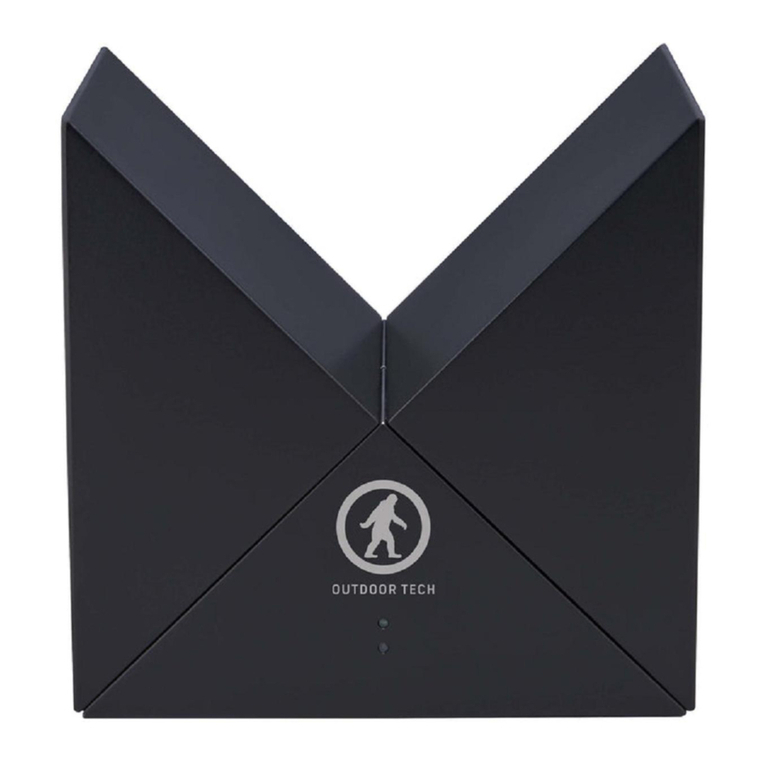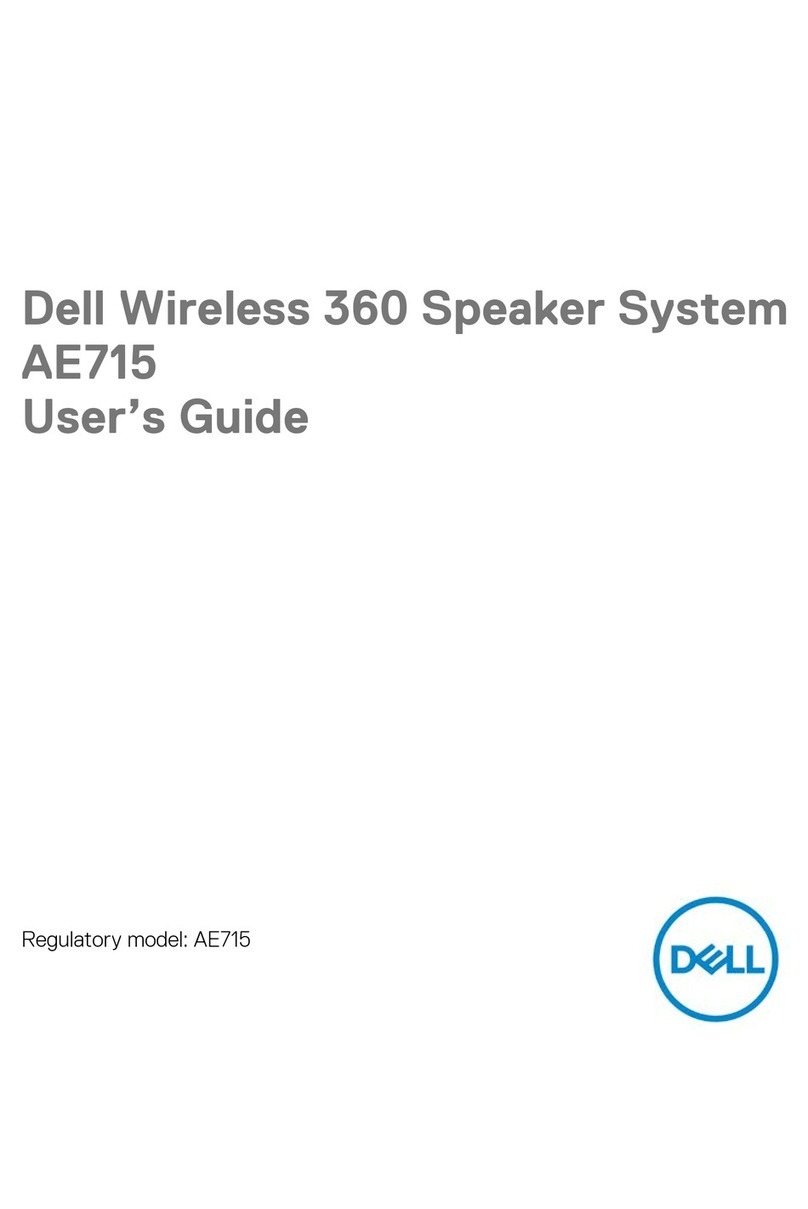The Loudspeaker Kit C4 User manual

Assembly manual C4 Kit
2
Congratulations on the purchase of your new loudspeaker kit. After following these simple
instructions, you’ll enjoy high performance loudspeakers in no time!
Tools required:
Philips head screwdriver
PVA woodworking glue
Damp cloth
Sand paper (approx 180 grit)
Step 1 –Preparation
Lay the contents of the box out and check you have everything you need to complete the kit
(see parts list on back page). Find a suitable work surface and make sure it won’t be ruined if
you spill some glue. If covering the work surface, avoid using newspaper as newsprint may
rub off onto your kit.
Before commencing construction, first do a dry fit of the panels to ensure you understand the
assembly process. The parts should fit together snugly without the use of excessive force. Be
careful when pulling the box apart to ensure you don't damage the edges of the panels.
Avoid the temptation to commence without first reading through the instructions. It’s best to
be prepared for upcoming steps.
Lightly sand any areas where there are little burs, which are a result of the CNC machining
process. Light sanding ensures the panels fit together well.

Assembly manual C4 Kit
3
Step 2 - Base and Side Panels
The front and rear panels have circular cut outs for drivers, port and terminals.
Lay out the side panels as shown. Apply glue to the trench around the perimeter of the front
baffle. Apply glue also to the trench of the side panels as shown below.

Assembly manual C4 Kit
4
Apply glue to the edge of the top and bottom panels as shown above. Now assemble the side
and top panels, aligning the rail on the edge of the top with the trench in the side panel, as
shown below.
Repeat this with the other two panels.

Assembly manual C4 Kit
5
The smaller side panel goes on last.
Before proceeding, check that:
there is adequate glue visible along each join
the panels align correctly
Wipe off any excess glue with a damp rag.

Assembly manual C4 Kit
6
Step 3 —Fix crossover on back panel
Screw on the crossover board to the rear panel. It can be done after assembling the box but it’s easier
to do it now.
Two sets of pilot holes are provided –it doesn’t matter which you choose. The orientation is also not
important.

Assembly manual C4 Kit
7
Apply glue to the trench around the perimeter of the back panel.
Avoid the temptation to use more glue than you see here –you will simply waste glue and
spend more time cleaning up.
Press the back panel into place ensuring that each corner aligns. Wipe off excess glue.

Assembly manual C4 Kit
8
Step 4 —Clamping
One of the benefits of this kit is that neither clamping nor biscuit joins are required, making
assembly simpler. However, one may optionally choose to use clamping. Clamping offer the
benefit of slightly improved alignment of panels and potentially better joins. This is more
important when using a painted finish. Otherwise, if using any kind of veneer, a brick or other
weight may be used.
We recommend leaving the box clamped or weighted with a brick overnight. Refer to the
instructions of the glue you are using.
Brick on top:

Assembly manual C4 Kit
9
Before clamping, make sure each edge is carefully aligned - a little care here will ensure the
best result. Once you have clamped the box, ensure you wipe off any excess glue that has
been squeezed out. Once the glue has dried remove the clamps. To obtain a smooth finish,
lightly sand the edges of the panels with a fine grade sandpaper, about 180 grit works best. If
you plan to paint or varnish the box a little extra effort now to remove all traces of glue and
rough edges will be well worth it.
Step 5 –Install terminals
Identify the pair of wires to be connected to the input terminals.
The cables are black and
unlike all the others, the
spades are both the same
size. The negative cable has
a white stripe. Feed both
through the input terminal
hole in the rear of the box.

Assembly manual C4 Kit
10
Now place the box so that the front baffle is facing up again. Insert the black acoustic lining
material.
Insert so that the lines the back and side walls.

Assembly manual C4 Kit
11
Above: Damping is being pressed into place.
Step 6 –install the ports
Now press the ports into place. The fit is quite firm so there is no need to glue them in place.

Assembly manual C4 Kit
12
Step 7 –install the tweeter
The tweeter terminals are easy to find as they are the only pair of white cables. The spade
connectors are different sizes to ensure that the tweeter polarity is correct.
Connect the pair of white cables to the tweeter terminals.
If you find they are too tight, avoid undue force that could damage the tweeter terminals.
Instead, use a small flat head screw driver to gently prize open the spade connector. This is
shown over the page.
The spade connectors should be firm when the cables are pushed onto the driver terminals,
but not to the extent that damage is likely.

Assembly manual C4 Kit
13
Above: here we are carefully prizing open the spade connector.
Use care when installing screws. We recommend screwing by hand rather than using a
powered driver of any kind. These devices can cause over-tightening or the tool can slip off
and puncture a driver with the tip. The safest method is with a Phillips head screw driver with
one hand bracing the screwdriver.

Assembly manual C4 Kit
14
Step 8 –install the woofers
The cables that remain are for the woofers. Pull the longer cable out the hole that is furthest
from the crossover board. Both woofers share the same crossover network, so it doesn’t
matter which cable goes to which woofer, except that one pair of cables is longer.
Push spade terminals onto each woofer. The cable with the white stripe and smaller spade
goes onto the negative driver terminal.
Lower the woofer gently into the hole and angle the driver so that the terminals are clear of the
cut out on the way down.

Assembly manual C4 Kit
15
Fix the woofers into place. Note how the screw driver is braced with the other hand.
Wire up the speaker to your amplifier and you‘re ready to rock!

Assembly manual C4 Kit
16
Parts List:
2 x 4½” Woofers
1 x 22mm Tweeters
1 x Crossover Networks
1 x Round input Terminal
6 x Panels of CNC machined MDF featuring our unique panel locking system
17 x Screws
2 x 25mm Tuning Ports
1 x Piece of Acoustic Lining
SPECIFICATIONS:
Woofer Size: 4½”
Woofer Cone: Paper
Tweeter: Soft dome
Frequency Response: 65Hz (-3dB) to 20Khz, +/- 2dB
Recommended Amplifier: 50-100W RMS
Crossover: 1st order @ 2.7Khz
Sensitivity: 86 dB
Power Handling: 50W RMS, 100W peak
Impedance: Nominal 8 ohm (minimum 6.6 ohm)
Dimensions: 235mm high x 145mm wide x 167mm deep.
Table of contents
Other The Loudspeaker Kit Speakers manuals


